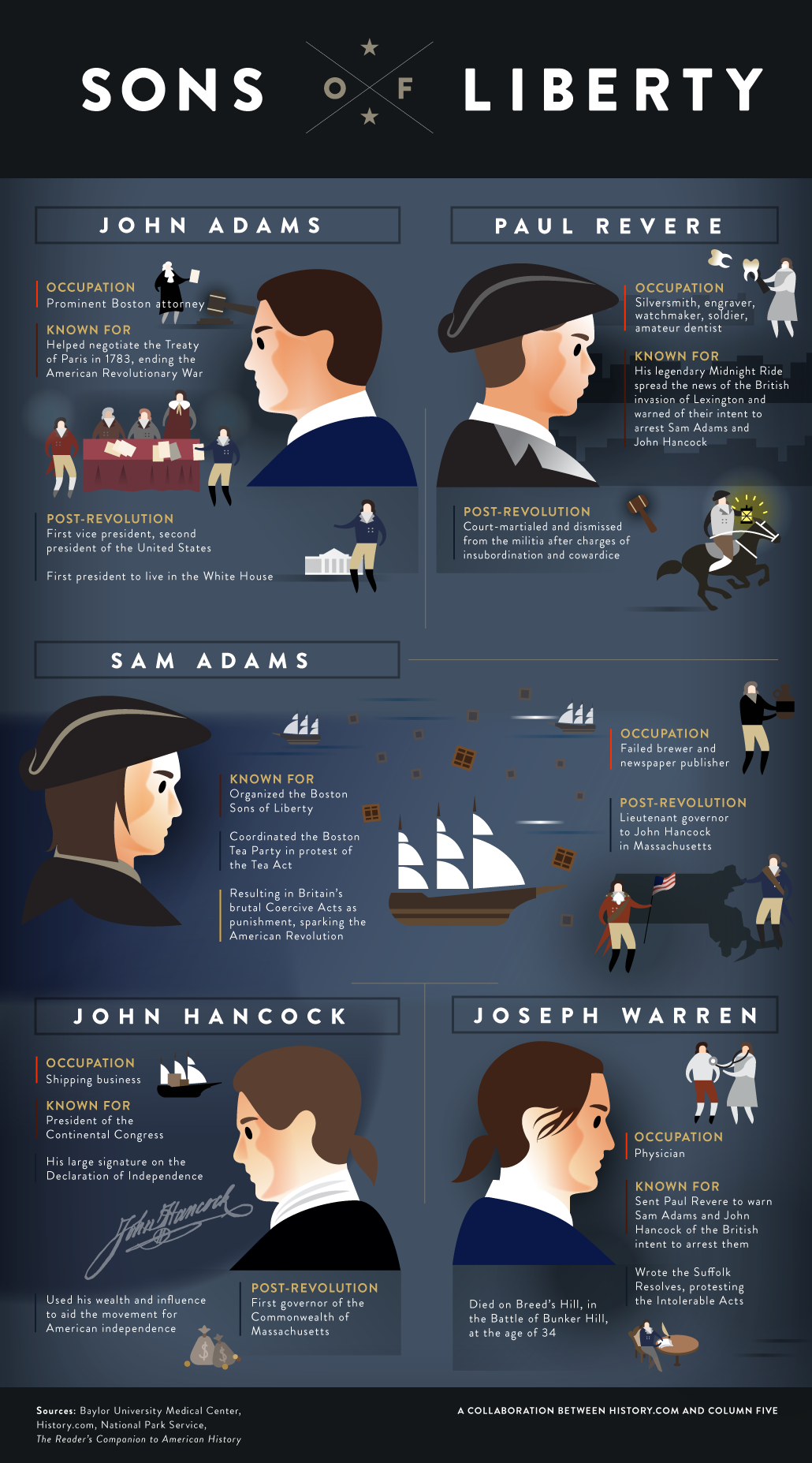Tag: The Founding Fathers
Sons Of Liberty

The Sons of Liberty was an organization of American colonists that was created in the Thirteen American Colonies. The secret society was formed to protect the rights of the colonists and to fight taxation by the British government. They are best known for undertaking the Boston Tea Party in 1773 in reaction to new taxes. Britain responded with the Intolerable Acts, leading to a counter-mobilization by the Patriots.
In the popular imagination, the Sons of Liberty was a formal underground organization with recognized members and leaders. More likely, the name was an underground term for any men resisting new Crown taxes and laws. The well-known label allowed organizers to issue anonymous summons to a Liberty Tree, “Liberty Pole”, or other public meeting-place. Furthermore, a unifying name helped to promote inter-Colonial efforts against Parliament and the Crown’s actions. Their motto became, “No taxation without representation.”
Unfounding Father Vs. Founding Father Round V
Technically Lincoln was not a Founding Father. But Lincoln’s legacy in history is as the Savior and Protector of the Union qualifies him for this comparison.
Previously:
Unfounding Father Vs. Founding Father
Unfounding Father Vs. Founding Father Round II
Unfounding Father Vs. Founding Father Round III
Unfounding Father Vs. Founding Father Round IV
The American Dream
The American Dream ended on November 6th, 2012 in Ohio. The second term of Barack Hussein Obama has been the final nail in the coffin for the legacy of the white Christian males who discovered, explored, pioneered, settled and developed the greatest Republic in the history of mankind.
A coalition of Blacks, Latinos, feminists, gays, government workers, union members, environmental extremists, the media, Hollywood, uninformed young people, the forever needy, the chronically unemployed, illegal aliens, and other fellow travelers has ended Norman Rockwell’s America.
The US Constitution has been replaced with Saul Alinsky’s ‘Rules for Radicals’ and Chicago shyster David Axelrod, along with international socialist George Soros, will be pulling the strings on their black puppet to bring us into the New World Order.
The Republicans ran two candidates who couldn’t even win their own home states, while circus clown Chris Christie helped Obama over the top with a glowing ‘post-Sandy’ tribute that elevated the phony ‘Commander-in Chief’ to Mother Teresa status.
People like me are now completely politically irrelevant; I will never again comment on or concern myself with the aforementioned Republican coalition, which has surrendered our culture, our heritage and our traditions without a shot being fired.
You will never again outvote the people who gave Obama four more years. It will take individual acts of defiance and massive displays of civil disobedience to get back the rights we have allowed them to take away. It will take zealots, not moderates; zealots who will never ‘reach across the aisle’ to RINOs, to right this ship and restore our beloved Country to it’s former status.
Those who come after us will have to risk ‘their lives, their fortunes and their sacred honor’ to bring back the Republic that this generation has timidly frittered away due to white guilt and political correctness.
[AdSense-B]



![The American Dream - The United States of America - A Nation in dire distress - Title 4, Chapter 1. The Flag. Section 8. Respect for flag. [ ] "a. The flag should never be dispayed with the union down, exept as a signal of dire distress in instances of extreme danger to life or property."](https://commonsenseevaluation.com/wp-content/uploads/2015/12/The-American-Dream.jpg)